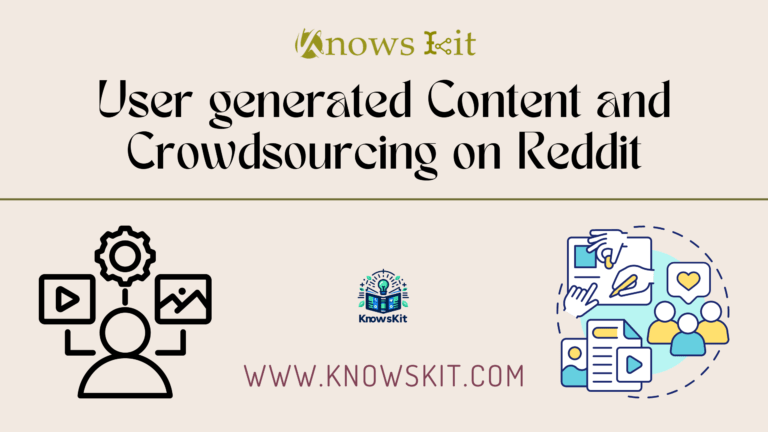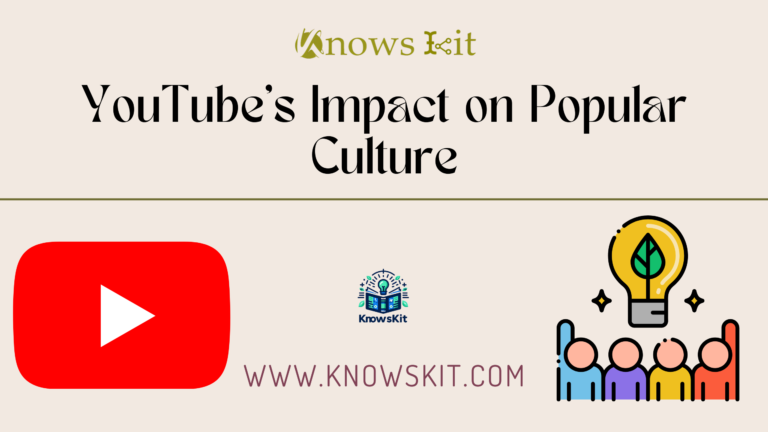In the ever-evolving world of digital marketing, the concept of a “Social Media Funnel” has become a buzzword synonymous with success. This funnel, a strategy to harness the power of social media platforms, is crucial for businesses looking to expand their online presence and engage effectively with their audience.
At its core, the Social Media Funnel is a roadmap that guides potential customers through various stages – from becoming aware of your brand to becoming loyal advocates. Unlike traditional marketing funnels, the social media version leverages the unique features of social platforms to create a more dynamic and interactive customer journey.
In this article, we delve deep into understanding, creating, and optimizing a Social Media Funnel, ensuring that each aspect is covered in detail. We aim to equip you with the tools and knowledge necessary to effectively utilize this powerful marketing strategy.
Understanding the Social Media Funnel
What is a Social Media Funnel?
![Mastering the Social Media Funnel: Maximize Your Marketing [2024 Exquisite Guide] 2 Diverse individuals engaging with social media, highlighting interactions like comments and likes.](https://www.knowskit.com/wp-content/uploads/2024/01/the-essence-of-audience-engagement-on-social-media-1024x585.png)
A Social Media Funnel is a structured approach to converting casual social media viewers into loyal customers. It’s more than just posting content; it’s about creating a journey for your audience, guiding them through stages of discovery and engagement, and eventually leading them to take action.
The Stages of a Social Media Funnel
- Awareness: This is the top of the funnel where potential customers first learn about your brand. It’s about making a strong first impression.
- Engagement: Here, you interact with your audience through content, encouraging likes, comments, and shares.
- Conversion: At this stage, you persuade your audience to take a specific action, like signing up for a newsletter or making a purchase.
- Loyalty: This involves turning one-time buyers into repeat customers by building a lasting relationship.
- Advocacy: The final stage, where loyal customers become brand advocates, spreading the word about your products or services.
| Stage | Key Activities | Goals |
|---|---|---|
| Awareness | Content creation, SEO | Brand recognition |
| Engagement | Interactive posts, surveys | Audience interaction |
| Conversion | CTAs, promotions | Sales, sign-ups |
| Loyalty | Personalized experiences | Repeat business |
| Advocacy | Encouraging shares, reviews | Word-of-mouth |
Building Your Social Media Funnel
![Mastering the Social Media Funnel: Maximize Your Marketing [2024 Exquisite Guide] 3 Potential of the Social Media Funnel](https://www.knowskit.com/wp-content/uploads/2024/01/image-66-1024x580.png)
Setting Up the Foundation
Creating an effective Social Media Funnel, it begins with laying a solid foundation. This involves identifying your target audience – understanding their demographics, interests, and online behaviors. Knowing who you’re talking to is crucial in tailoring your message and content. Selecting the right platforms is another foundational step. Not all social media platforms cater to the same audience, so choose those where your target audience is most active.
Strategies for Each Stage of the Funnel
Implementing specific strategies for each stage of the funnel is key to moving your audience through it effectively.
- Awareness: Use eye-catching visuals and compelling narratives to draw attention. SEO optimization ensures your content is discoverable.
- Engagement: Foster a sense of community with interactive posts, Q&As, and live sessions.
- Conversion: Employ strong calls-to-action (CTAs) and limited-time offers to encourage immediate action.
- Loyalty: Provide exclusive content, rewards, or discounts to repeat customers.
- Advocacy: Encourage satisfied customers to share their experiences and reviews.
Case Study Highlight: A well-known brand’s successful implementation of a Social Media Funnel led to a 50% increase in online sales. By focusing on targeted content at each stage and actively engaging with their audience, they transformed followers into brand advocates.
Content Creation and Management
![Mastering the Social Media Funnel: Maximize Your Marketing [2024 Exquisite Guide] 4 Marketer analyzing crucial social media metrics on a screen, emphasizing data-driven optimization.](https://www.knowskit.com/wp-content/uploads/2024/01/the-role-of-analytics-in-social-media-strategy-1024x585.png)
Crafting Compelling Content
Understanding the Power of Content in the Social Media Funnel
At the heart of every successful Social Media Funnel is the content that drives it. Content is not just a means to fill your social media pages; it’s the vehicle that carries your audience through the different stages of the funnel.
| Industry | Facebook (Posts/Day) | Instagram (Posts/Day) | Twitter (Posts/Day) | LinkedIn (Posts/Day) | TikTok (Posts/Day) |
|---|---|---|---|---|---|
| Food and Beverage | 0.28 | 0.88 | 3 | 1 | 2 |
| Government | 0.65 | 0.95 | 3 | 1 | 2 |
| Healthcare and Wellness | 0.34 | 0.78 | 3 | 1 | 2 |
| Nonprofit | 0.50 | 1.00 | 3 | 1 | 2 |
| Real Estate | 0.29 | 0.52 | 3 | 1 | 2 |
| Retail | 0.37 | 1.02 | 3 | 1 | 2 |
| Professional Services | 0.40 | 0.70 | 3 | 1 | 2 |
| Technology | 0.45 | 0.75 | 3 | 1 | 2 |
| Travel, Hospitality, Leisure | 0.55 | 0.90 | 3 | 1 | 2 |
Types of Content for Each Stage of the Funnel
- Awareness: In this initial stage, your goal is to capture attention and make a lasting impression. Content like educational blog posts, eye-catching infographics, and viral videos can be highly effective. These materials should be designed to introduce your brand and its values to potential customers.
- Engagement: Here, the focus shifts to building a relationship with your audience. Interactive posts, polls, Q&As, and user-generated content can foster a sense of community and encourage active participation.
- Conversion: Content at this stage needs to persuade the audience to take action. Product demonstrations, customer testimonials, and clear, compelling calls-to-action (CTAs) can motivate your audience to make a purchase or sign up for a service.
- Loyalty: To turn customers into repeat buyers, content should be personalized and provide added value. Exclusive offers, behind-the-scenes looks, and content that appreciates customer loyalty help deepen the relationship.
- Advocacy: Content that encourages sharing and referrals, like customer success stories or community highlights, can turn loyal customers into brand advocates.
Storytelling: The Heart of Content Strategy
- The Role of Storytelling: In every piece of content, storytelling plays a crucial role. It’s not just about what you say, but how you say it. Stories can evoke emotions, create connections, and make your brand more memorable.
- Crafting Your Brand’s Story: Your brand’s story should be authentic, relatable, and aligned with your values. It’s about creating a narrative that resonates with your audience and sets you apart from competitors.
Managing and Scheduling Content
Consistency is Key
- Content Calendar: Develop a content calendar to plan and schedule posts in advance. This ensures a consistent presence on social media, which is vital for keeping your audience engaged and moving through the funnel.
- Best Practices for Scheduling: Analyze your audience’s online behavior to determine the best times to post. Utilize scheduling tools like Hootsuite or Buffer to maintain a regular posting schedule.
Adapting to Audience Feedback and Trends
- Listening to Your Audience: Pay attention to how your audience interacts with your content. What do they like? What generates the most engagement? Use this feedback to refine your content strategy.
- Staying Current: Social media trends change rapidly. Keep your content fresh and relevant by staying up-to-date with the latest trends and adapting your content accordingly.
Leveraging Multimedia and Interactive Elements
- Diversifying Content Types: Incorporate a mix of content types – videos, images, infographics, podcasts – to keep your audience engaged and cater to different preferences.
- Interactive Elements: Features like polls, quizzes, and interactive stories can increase engagement and provide valuable insights into your audience’s preferences and behavior.
Expert Quote on Content Significance
Quote: “In the digital world, content is the king that reigns supreme. Effective content can not only attract an audience but can also keep them engaged and move them seamlessly through the Social Media Funnel.” – A renowned Digital Marketing Expert.
Leveraging Analytics and Feedback
![Mastering the Social Media Funnel: Maximize Your Marketing [2024 Exquisite Guide] 5 Potential of the Social Media Funnel](https://www.knowskit.com/wp-content/uploads/2024/01/image-65-1024x584.png)
Measuring Success in Your Social Media Funnel
The Importance of Data-Driven Decisions
In the dynamic world of social media, making informed decisions is crucial for success. This is where analytics come in – they provide a clear picture of how your strategies are performing and where there’s room for improvement.
| Industry | Facebook (%) | Instagram (%) | Twitter (%) | LinkedIn (%) | TikTok (%) |
|---|---|---|---|---|---|
| Food and Beverage | 0.68 | 1.38 | 0.90 | 1.17 | 0.53 |
| Government | 1.44 | 1.93 | 1.24 | 1.96 | 0.54 |
| Healthcare and Wellness | 1.16 | 1.81 | 0.93 | 1.37 | 0.43 |
| Nonprofit | 1.47 | 2.32 | 1.26 | 1.91 | 0.47 |
| Real Estate | 0.76 | 1.41 | 0.90 | 1.17 | 0.53 |
| Retail | 0.76 | 1.79 | 0.90 | 1.17 | 0.53 |
| Professional Services | 0.89 | 1.41 | 0.85 | 1.32 | 0.28 |
| Technology | 0.78 | 1.37 | 1.29 | 1.39 | 0.36 |
| Travel, Hospitality, Leisure | 0.85 | 1.45 | 1.20 | 1.27 | 0.58 |
Key Performance Indicators (KPIs) for Each Funnel Stage
- Awareness: Measure reach, impressions, and website traffic originating from social media. These metrics indicate how effectively you’re capturing the attention of potential customers.
- Engagement: Look at likes, shares, comments, and overall engagement rate. High engagement means your content resonates with your audience.
- Conversion: Conversion rate, click-through rate (CTR), and sales generated through social media are critical to evaluate at this stage. They measure how well your content motivates action.
- Loyalty: Focus on repeat purchase rate and customer retention rate. These indicate how well you’re maintaining customer relationships.
- Advocacy: Track referral traffic and brand mentions. High numbers here show that your customers are actively promoting your brand.
Utilizing Analytics Tools
- Choosing the Right Tools: Platforms like Google Analytics, Facebook Insights, and Twitter Analytics offer a wealth of data. Choose tools that best fit your platform and goals.
- Interpreting Data: Understanding what these numbers mean is crucial. For instance, a high bounce rate on your website might indicate that your social media content isn’t aligned with your website offerings.
Using Feedback to Optimize Your Funnel
Actively Seeking and Incorporating Customer Feedback
- Engaging with Your Audience: Use social media as a two-way communication channel. Encourage feedback through polls, direct messages, and comments.
- Importance of Customer Surveys: Periodic surveys can provide deep insights into customer satisfaction and areas for improvement.
A/B Testing for Optimization
- Implementing A/B Testing: Test different elements of your social media content – from the images used to the tone of voice – to see what resonates best with your audience.
- Analyzing Results: Use the data from these tests to make informed decisions about future content and strategies.
Continuous Improvement Based on Insights
- Adapting to Feedback: Regularly adjust your strategies based on customer feedback and analytics data.
- Iterative Process: Remember that optimizing your Social Media Funnel is an ongoing process. Regular analysis and adaptation are key to staying relevant and effective.
Expert Tips and Best Practices
- Align KPIs with Business Goals: Ensure that the KPIs you’re tracking are aligned with your overall business objectives.
- Understand the Customer Journey: Use analytics to map out and understand the customer journey on social media.
- Stay Updated on Analytics Trends: The field of analytics is constantly evolving. Stay informed about the latest tools and techniques.
Expert Quote on the Importance of Analytics
Quote: “In the realm of social media, analytics are the compass that guides your content ship. Ignoring them is like sailing blindfolded.” – A Social Media Analytics Expert.
Advanced Techniques and Trends
![Mastering the Social Media Funnel: Maximize Your Marketing [2024 Exquisite Guide] 6 Harmonious integration of various digital marketing channels, including social media, email, and content marketing](https://www.knowskit.com/wp-content/uploads/2024/01/unifying-digital-marketing-channels-1024x585.png)
Integrating with Other Marketing Efforts
Creating a Cohesive Marketing Strategy
The Social Media Funnel should not exist in isolation. Integrating it with your overall marketing strategy enhances its effectiveness and provides a unified brand experience to your audience.
Synergy with Email and Content Marketing
- Email Marketing Integration: Use social media to grow your email list, and vice versa, use email campaigns to promote your social media content. This creates a loop that drives traffic back and forth.
- Content Marketing Synergy: Align the content on your social media with your broader content marketing strategy. This ensures consistent messaging and maximizes the impact of your content across all platforms.
Keeping Up with the Latest Trends
Staying Ahead in a Fast-Paced Digital World
Social media trends evolve rapidly. Staying informed and adapting to these trends is crucial for keeping your strategy relevant and effective.
Emerging Trends in Social Media
- Artificial Intelligence and Personalization: AI tools are becoming increasingly sophisticated, allowing for more personalized content and interaction on social media, and enhancing user experience and engagement.
- The Rise of Video Content: Video content, including live streaming, is gaining immense popularity. It’s engaging and can convey more information in a shorter time.
- Social Commerce: Platforms are integrating more e-commerce features, making it easier for users to make purchases directly through social media.
- Micro-Influencers: Brands are increasingly partnering with micro-influencers, who tend to have highly engaged niche audiences, for more targeted and authentic marketing.
Top 5 Trends Shaping the Future of Social Media Funnels
![Освоение воронки социальных сетей: Максимизируйте свой маркетинг [2024 г. Изысканное руководство] 7 Potential of the Social Media Funnel](https://www.knowskit.com/wp-content/uploads/2024/01/image-64-1024x667.png)
- Increased Use of AI for Personalization: Leveraging AI to tailor content and interactions based on user behavior and preferences.
- Video Content Dominance: Embracing various forms of video content to engage users more effectively.
- Integration of Social Commerce Features: Utilizing built-in shopping features on social platforms for a seamless shopping experience.
- Growth of Micro-Influencer Collaborations: Partnering with niche influencers for more authentic and targeted outreach.
- Focus on Authentic and Transparent Content: Prioritizing genuine, relatable content to build trust with audiences.
Adaptation and Innovation
Continuously Adapting to Change
Being flexible and ready to adapt your strategy in response to new trends and technologies is key to staying ahead in social media marketing.
Encouraging Innovation
- Encourage Creative Thinking: Foster a culture of innovation within your team. Regular brainstorming sessions and open communication can lead to groundbreaking ideas.
- Experiment with New Platforms and Features: Don’t be afraid to experiment with emerging platforms or new features on existing ones. Early adoption can give you a competitive edge.
Expert Insight on Social Media Trends
Quote: “In the ever-changing landscape of social media, staying static means falling behind. Adaptation and innovation are not just recommended; they are essential.” – A Social Media Marketing Guru.
Common Challenges and Solutions
![Mastering the Social Media Funnel: Maximize Your Marketing [2024 Exquisite Guide] 8 Potential of the Social Media Funnel](https://www.knowskit.com/wp-content/uploads/2024/01/image-63-1024x616.png)
Identifying and Overcoming Obstacles
Navigating the Complexities of Social Media
Social media marketing, while effective, comes with its own set of challenges. Recognizing and addressing these obstacles is key to maintaining a successful strategy.
Common Challenges Faced
- Constant Platform Changes: Social media platforms frequently update their algorithms and policies, which can impact visibility and engagement.
- Content Saturation: With the sheer volume of content being posted every day, it’s challenging to stand out in crowded newsfeeds.
- Measuring ROI: Determining the return on investment for social media activities can be complex due to indirect and long-term benefits.
- Maintaining Consistent Engagement: Keeping your audience consistently engaged over time can be demanding.
Expert Tips for a Robust Social Media Funnel
Adapting to Algorithm Changes
- Stay Informed: Keep abreast of updates on different platforms. Social media forums and industry blogs can be valuable resources.
- Flexibility in Strategy: Be prepared to adjust your content and posting strategy in response to these changes to maintain visibility and engagement.
Strategies to Stand Out in a Crowded Space
- Create Unique and High-Quality Content: Focus on content that provides value, is unique to your brand, and resonates with your audience.
- Leverage User-Generated Content: Incorporating content created by your audience can increase relatability and engagement.
Effective Ways to Measure ROI
- Set Clear Goals and KPIs: Establish specific, measurable goals for your social media campaigns.
- Use Analytics Tools: Utilize social media analytics tools to track progress and measure success against your goals.
Keeping the Audience Engaged
- Regular Interaction: Engage with your audience through comments, messages, and community posts.
- Content Variety: Keep your feed fresh with a mix of content types and formats.
Addressing Content and Engagement Challenges
Creating a Content Calendar
- Plan Ahead: Use a content calendar to plan your posts. This helps maintain a consistent posting schedule.
- Thematic Planning: Use themes or campaigns to give your content direction and keep your audience engaged.
The Importance of Community Building
- Foster a Community Feel: Encourage discussions and interactions among your followers to build a sense of community around your brand.
- Responsive Engagement: Promptly responding to comments and messages can significantly boost engagement and loyalty.
Final Thoughts on Overcoming Challenges
Remember, challenges in social media marketing are not roadblocks but opportunities to innovate and strengthen your strategy. By staying informed, being adaptable, and focusing on engaging content, you can navigate these challenges effectively.
ЧАСТО ЗАДАВАЕМЫЕ ВОПРОСЫ
How to Handle Negative Comments on Social Media?
Approach: Address customer concerns to regain trust. Ignoring negative comments can damage your reputation.
Moderation: Utilize social media platforms’ comment filtering options, like those on Facebook and Instagram, to manage inappropriate content.
Engagement: Engaging positively with customers, even in negative situations, can turn a potential PR crisis into an opportunity to demonstrate excellent customer service
What’s the Right Frequency for Posting on Social Media?
Balance: Find a balance that keeps your audience engaged but not overwhelmed. Overposting can lead to unfollows, while underposting may cause your audience to forget about you.
Platform-Specific: Different platforms have different optimal frequencies. For instance, Twitter may require more frequent posts than LinkedIn.
Experimentation: Experiment to determine the best frequency for your audience and adjust as needed
Is Paid Social Media Advertising a Good Idea?
Strategy: Use paid advertising to raise awareness for your products or services, but don’t rely on it for every update.
Effectiveness: While many find paid ads effective, it’s important to choose the right platform for your audience and ensure your ads are well-targeted.
B2C vs. B2B: Paid ads are generally more effective for B2C than B2B. It’s crucial to assess the effectiveness based on your specific industry and audience
How to Measure ROI in Social Media?
Metrics: Focus on reach, traffic, engagement, and conversions.
Calculation: Use the formula: Social Media ROI = (Return from social media – cost of social media marketing) / cost of social media marketing.
Analysis: Regularly analyze these metrics to gauge the effectiveness of your social media campaigns
Do I Need an SMM Manager?
Roles: An SMM manager handles various tasks, including content scheduling, engagement, analytics review, and strategy optimization.
Skills: Look for someone skilled in communication, problem-solving, storytelling, and data analysis.
Decision: Hiring a specialist depends on your budget and the complexity of your social media strategy
What Should You Post on Social Media?
Content Relevance: Post content that is interesting and relevant to your target audience.
Inspiration: Follow influencers and industry leaders for content ideas and inspiration.
Engagement: Encourage audience interaction and feedback to refine your content strategy
Which Social Media Platforms Should My Business Have a Presence On?
Platform Selection: Your choice of platforms should depend on where your target audience is most active.
Visual Content: If your product is visually appealing, consider platforms like Instagram and Pinterest.
Platform-Specific Strategies: Remember that each platform requires a different content and engagement strategy
What Common Social Media Marketing Mistakes Should My Business Avoid?
Inconsistency: Avoid sporadic posting and lack of engagement with your audience.
Spamming: Steer clear of spamming and posting irrelevant content.
Audience Engagement: Focus on building relationships with your audience rather than solely promoting your content
Conclusion: Harnessing the Power of the Social Media Funnel
The journey through the intricacies of the Social Media Funnel comes to an end, but the journey for your brand is just beginning. This comprehensive guide has laid out the steps and strategies to create, manage, and optimize your Social Media Funnel. By understanding each stage, creating engaging content, leveraging analytics, and staying ahead of trends, you are now equipped to transform your social media presence into a powerful tool for business growth.
Embrace this opportunity to connect with your audience in a meaningful way, turning followers into loyal customers and brand advocates. Remember, the Social Media Funnel is not a one-size-fits-all solution; it requires continuous adaptation and optimization. With dedication and creativity, you can create a funnel that not only resonates with your audience but also drives measurable success.
More Reference:-
https://www.sciencedirect.com/science/article/abs/pii/S0167811618300508
https://www.tandfonline.com/doi/abs/10.1080/21670811.2021.2004553
https://www.emerald.com/insight/content/doi/10.1108/QMR-03-2019-0041/full/html

![Mastering the Social Media Funnel: Maximize Your Marketing [2024 Exquisite Guide] 1 Diverse individuals engaging with social media, highlighting interactions like comments and likes.](https://www.knowskit.com/wp-content/uploads/2024/01/the-essence-of-audience-engagement-on-social-media.png)

![Social Media Strategy [2024 Exquisite Guide] 17 Social Media Strategy [2024 Exquisite Guide]](https://www.knowskit.com/wp-content/uploads/2024/01/blueprint-of-a-social-media-strategy-768x439.png)



